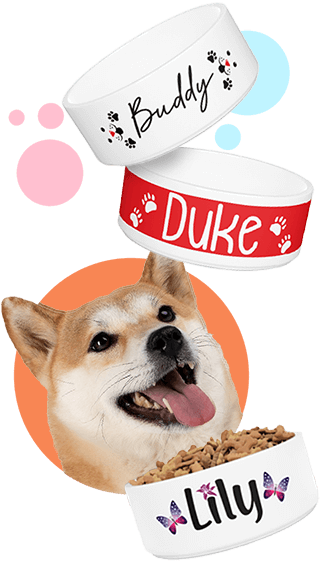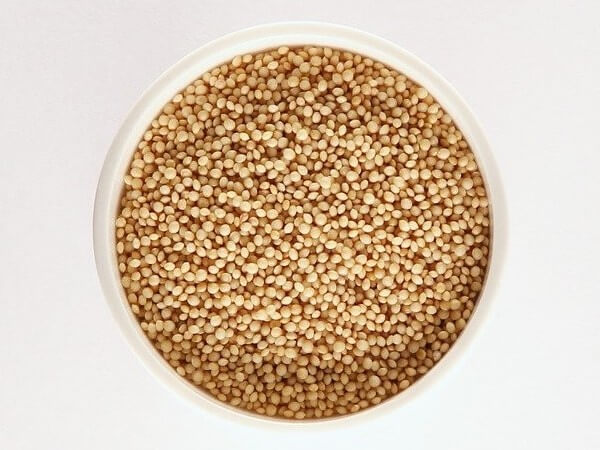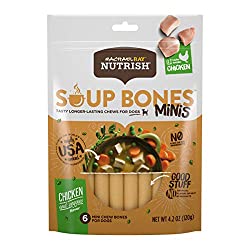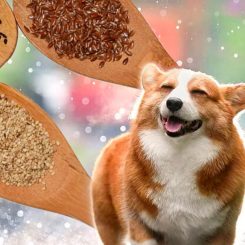

Can dogs eat Amaranth? Yes, Amaranth is safe for adult dogs. This ancient South American staple is considered a healthier alternative to grain in dog food. However, the research on Amaranth’s feasibility is ongoing and this seed is still regarded as experimental for canines.
This weekend, I decided to add some Amaranth to my Strawberry smoothie. The Amaranth gave the smoothie a bit of a crunchy, nutty, and sweet taste and it was quite delicious. My two dogs came running over as I was eating my smoothie and wanted some, but I wondered if Amaranth is safe for dogs to eat.
Table of Contents
Is Amaranth good for dogs?
Most dog food manufacturers utilize buckwheat, barley, oat, and millet flour in their dog food.
However, rising concerns regarding the suitability of grains for canines have made dog owners question these floury options. These concerns have made pet parents, nutritionists, and a few dog food manufacturers look to Amaranth as a safe and healthy alternative to grains in dog food.
Here are six reasons why Amaranth, a pseudo-cereal, is gaining popularity:
- Doesn’t contain gluten. If your dog is gluten intolerant or has a gluten allergy, you might want to switch to dog food that contains Amaranth.
- Not a grain. If you’re concerned about the presence of grain in your dog’s diet, you can rest easy knowing that Amaranth isn’t a grain. Essentially, this seed would be a great option if your pooch has grain allergies.
- Packed with protein. It contains more protein than milk and all other types of grains. Since dogs have a high nutritional need for protein, Amaranth makes dog food more protein-dense.
- Rich in dietary minerals. Minerals like calcium, iron, phosphorous, copper, manganese, and zinc are abundantly found in Amaranth.
- Contains all essential amino acids. One reason why Amaranth is considered a superfood is that it contains all nine essential amino acids. This isn’t something you’d find in other grains.
- Lowers cholesterol and keeps your dog’s gut healthy. The high fiber content in Amaranth keeps your dog’s intestines healthy and clean. Amaranth also promotes healthy bowel movements while absorbing excess cholesterol in the blood.
Fun Fact: Goji Berries are also considered a superfood that is great for dogs. They are also packed with minerals like iron, amino acids, and zinc.
What is Amaranth?
Amaranth is a cereal-like crop used worldwide as a gluten-free substitute for wheat and other grains. Due to its vibrant appearance, this plant is also used for ornamental purposes.
READ ALSO: Can Dogs Eat Cheerios?
Where does Amaranth come from?
Amaranth is native to South America, but it is also used extensively in Indian, Chinese, and Mexican cuisines.
Can dogs eat Amaranth seeds?

Yes, dogs can eat Amaranth seeds as they are safe for doggy consumption. Make sure to cook them fully and properly before adding them to your pup’s food.
Can dogs eat Amaranth grain?
Yes, dogs can eat Amaranth grain, but only if it is fully cooked. Raw Amaranth grain can be too hard for dogs to digest.
Can dogs eat Amaranth flour?
Yes, dogs can eat Amaranth flour. Amaranth flour is a gluten-free alternative to grain flour. Be sure to cook it thoroughly before adding it to your canine friend’s food.
Can dogs eat red leaf Amaranth?
Dogs should only eat the seeds of the red leaf Amaranth. Red leaf Amaranth—also called Chinese spinach—has edible seeds, but the stem, leaves, and roots are all toxic for dogs. It’s best to keep red leaf Amaranth away from your furry friends.
Can dogs eat stem Amaranth?
No, dogs should not eat stem Amaranth. Amaranth stem is known to cause a toxic reaction in dogs.
READ NEXT: Can Dogs Eat Kimchi? The Spicy Truth!
When shouldn’t you feed Amaranth to your dog?
Amaranth is not a natural dog diet. Should your furry friends show signs of discomfort after eating the food, you may discontinue it.
While Amaranth is safe for puppies, they should stick to classic healthy and well-balanced dog food as a major part of their meals. Occasionally feeding a little bit of Amaranth to puppies is fine.
Dogs shouldn’t eat Amaranth seeds when they are raw. The seeds can be too tough for the dog to digest unless they’re cooked first.
Does Amaranth provide nutritional value for your dog?

Amaranth is a very nutritious food and can benefit your dog in a bunch of ways.
Most of the carbohydrates in Amaranth are fibrous. This high fiber content promotes regular bowel movements and keeps your canine friend’s digestive system in top form. Fiber also helps regulate blood sugar levels and improves cardiovascular health in dogs.
Protein is the foundation of a dog’s diet. It is recommended that dogs get most of their daily calories from protein. Amaranth is a safe and rich source of protein for our furry friends. Dogs fed on a protein-rich diet are stronger, healthier, and more capable of producing healthy offspring.
Antioxidants reduce cell degeneration and rid the dog’s body of environmental toxins. Amaranth’s antioxidant content is comparable to organ meat. However, organ meat can be high in fats, making Amaranth a healthier alternative.
While other grains have a few amino acids, Amaranth is packed with all nine amino acids. Incredible, right? One of these is Lysine. Lysine is an amino acid that regulates body fat, provides energy, absorbs calcium, and keeps your furry pup’s fur and body healthy.
How to add Amaranth to your dog’s diet
The best way to feed your pooch Amaranth is by adding cooked Amaranth seeds to his meal. You can also purchase dog food with Amaranth instead of grain flour.
While Amaranth is safe for canine consumption, any new food can initially give the dog a little digestive trouble.
If your four-legged friends have never had Amaranth before, it is best to introduce a very small amount of Amaranth first. Then if everything seems fine, you can increase the quantity and frequency of Amaranth in your dog’s diet.
It is important to keep in mind that Amaranth is a food additive, not a replacement for natural dog food. Amaranth should be fed moderately and most of your furry friend’s daily caloric intake should come from meat.
Handy Hint: Dogs love chicken meat! When it comes to feeding your furry friends meat, make sure it is not Spoiled Meat, but rather the meat is fresh and fully cooked.
Can I feed my dog Amaranth every day?
While Amaranth is considered safe, it is not natural dog food. Although it is considered more beneficial than wheat, making Amaranth an everyday part of your dog’s diet is not recommended.
When trying new foods for your canine companion, make sure to speak with your vet first and make sure your dog isn’t allergic to the ingredients in this new food.
Can dogs get sick from eating Amaranth?
When it comes to canine consumption, the only edible part of the Amaranth plant is its seed. Amaranth leaves, stems, and roots are highly toxic to dogs. Ingesting either one of these poisonous parts can cause food poisoning in dogs.
The Food and Drug Administration hasn’t approved Amaranth as a substitute to grain in commercial dog food. While dogs have shown no adverse side effects to Amaranth, it is best to exercise caution and consult with your vet first.
What if my dog accidentally ate a lot of Amaranth?
Amaranth has a relatively high glycemic index (GI), which means too much can cause a spike in blood sugar. That is why Amaranth should be mixed with dog food in moderate quantities instead of being fed directly.
If your pooch has eaten a lot of Amaranth by accident, you can expect some tummy troubles. However, any severe sickness is unlikely. As a precaution, cut your furry friend off any sugary carbs for the rest of the day and have plenty of water available.
The roots, stems, and leaves of an Amaranth plant are toxic to dogs. Ingesting those parts can make the dog sick. If that happens, wash your dog’s mouth with cool water and call your veterinarian immediately.
If you keep Amaranth plants around your house for ornamental reasons, keep them away from your dog’s reach. Place them on high surfaces or hang them in areas where your four-legged friends can’t jump and grab a quick bite out of them.
What are some dog-friendly foods that are similar to Amaranth?
Amaranth can boost your dog’s meal with essential nutrients. However, if you’re unsure about feeding Amaranth to your canine companions, here are some other natural additives to enhance the nutritional value of your dog’s food.
Eggs
Eggs not only improve the flavor and texture of your dog’s meal, but they also fortify it with protein, multivitamins, folate, essential fatty acids, and selenium. While dogs can eat raw eggs, it’s better to cook them first to avoid risking salmonella.
Fermented foods
We’ve covered how Sauerkraut’s probiotic goodness can keep a host of diseases away from your furry friend. Other fermented foods like kefir, cottage cheese, yogurt, and fermented vegetables also rid the dog’s body of toxins and improve their gut health.
Fish meat
Fish meat provides omega-3, an essential amino acid that promotes heart health in dogs. Fish fats are known to balance the good and bad fats in your doggy’s body.
Fish like cod, sardines, salmon, and herring are some of the best meats to add to your dog’s diet.
Apple cider vinegar
A dash of apple cider vinegar can lift the taste as well as the nutritional value of your pup’s meal. It boosts immunity and keeps the dog’s stomach performing properly. It also improves the dog’s skin and fur.
Organ meat
Dogs love eating animal innards. Organ meat contains a wealth of essential minerals, amino acids, and vitamins that promote muscle growth, fur quality, and cardiac health. The best part is that it doesn’t cost much.
Note that organ meat can be fatty and should be fed in moderation with your vet’s approval first.
Goat milk
All mammals have a natural need for milk. However, due to lactose intolerance in dogs, too much dairy can make them sick.
Goat milk is an exception, as it is much easier to digest than cattle milk. Your dog gets all the benefits of regular milk from goat milk in a low-fat, easy-to-digest package.
If your pooch has digestive problems or need probiotic that helps with their gut health, we highly recommend this one:
If you don’t have time to cook Amaranth or prefer dog-friendly treats instead, here is what we feed our pups instead:
How to make Amaranth for your dog at home?
You can cook Amaranth at home and add it to your dog’s regular food. The recipe involves nothing other than Amaranth seeds and water.
Bring 1 ½ cups of water to boil in a pan. Pour in 1 cup of Amaranth seeds, cover the pot, and allow it to simmer for about half an hour. Let it cool down and store it in the fridge. Mix it in your dog’s favorite food in moderate quantities.
So, can dogs eat Amaranth?
The Food and Drug Administration (FDA) is yet to approve Amaranth for use in dog food. But advocates of this protein-packed cereal are confident that it will soon become a staple dog food ingredient.
So far, Amaranth has proven safe for occasional canine consumption. If you want to put your four-legged friends on an Amaranth-enriched diet, make sure to speak with your vet first.
Related Questions
Yes, dogs can eat Amaranth n millet. Both of these ingredients are safe for dogs.
While Amaranth seeds are safe for canine consumption, the leaves, stem, and roots of the Amaranth are poisonous to dogs.
DISCLAIMER: THIS WEBSITE DOES NOT PROVIDE MEDICAL ADVICE
The information, including but not limited to, text, graphics, images and other material contained on this website are for informational purposes only. No material on this site is intended to be a substitute for professional veterinary advice, diagnosis, or treatment. Always seek the advice of your veterinarian or other qualified health care provider with any questions you may have regarding dietary needs.
Resources:
https://en.wikipedia.org/wiki/Amaranth
https://en.wikipedia.org/wiki/Pseudocereal

With over five years of specialized experience as an animal writer, my expertise lies in dog nutrition, health, behavior, grooming, and training. I am dedicated to delivering helpful and informative content that caters to the well-being of our furry friends. My primary goal is to empower pet owners with knowledge and ensure our canine companions thrive in health and happiness. In my free time, I love volunteering at local dog rescue centers.










